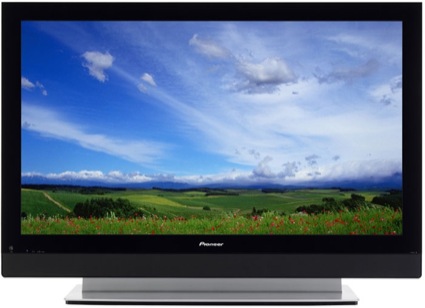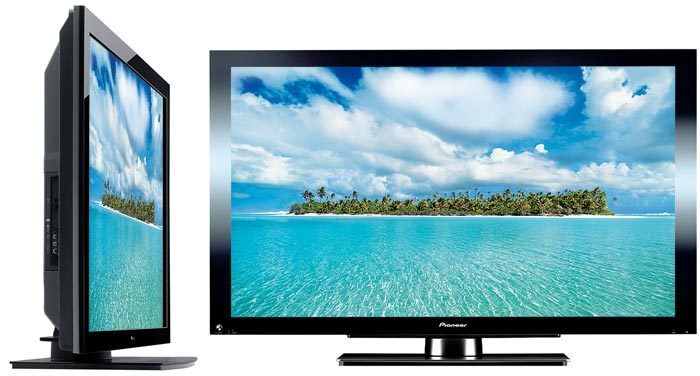Plasma TVs on the Way Out; Still Best
This week has been somewhat of a traumatic week for plasma HDTVs and fans of the technology.First in line to deliver bad news was Pioneer. A long time advocate of plasma technology, Pioneer announced that it will completely withdraw from producing plasm

This week has been somewhat of a traumatic week for plasma HDTVs and fans of the technology.

First in line to deliver bad news was Pioneer. A long time advocate of plasma technology, Pioneer announced that it will completely withdraw from producing plasma TVs by March. The announcement came to the surprise and dismay of many serious HDTV enthusiasts as Pioneer is considered to be the best maker of plasma TVs.
Why did Pioneer hold this acclaim? Its Kuro and Kuro Elite line of plasma panels are coveted among home theater enthusiasts due to their superior, inky black levels. While a panel's black level isn't an entire indication of its overall quality, it's a measurement taken very seriously by enthusiasts and greatly affects the quality of a movie. However, those who wanted the highly prized Kuro blackness had to shell out serious money for the displays, and even more for a Kuro Elite.
But don't be fooled. Simply splurging for a plasma over an LCD won't necessarily afford you deep, rich black. A plasma's black level is affected by the the necessity to go through a discharge reset when the display is illuminated. This means that for every moment a pixel is lit, a moment then follows where that pixel has to be discharged. This process adds a faint glow to the screen, which directly affects black levels. Obviously, this process is better on some plasmas--like the Kuros--than others. For those looking to pick-up a top of the line plasma that has the deepest of blacks, there's no better time than now to pick up a Pioneer Kuro before they disappear for good.
Pioneer's exit from the display scene won't be the only news to put a gloomy atmosphere on the HDTV market. Vizio announced this week that it too will ditch plasma technology completely. Vizio has gained significant market share in the U.S. since the brand launched a few years ago and positioned itself as the mainstream and affordable brand. While Vizio TVs aren't the creme de la creme of HDTVs, they are good value for many.
Despite the shake up in the HDTV market place and the announcement by various manufacturers to stop making plasmas, it continues to be, in my opinion, a superior technology for HDTV panels. While LCD panels are more affordable and more widely available, the inherent cons of the technology take away from the overall quality.
For example, backlighting on LCD panels remain on at all times, and light emission is controlled by a liquid crystal layer, which passes light through to a color filter at varying intensities to create the final image. While LCDs have improved significantly about being able to block light from passing through, it's still a primary draw back of the technology. LED based LCD panels that can turn off backlighting at specific screen locations help LCDs in this department greatly, but aren't yet available in very big screen sizes and are priced significantly higher than traditional LCDs.
Sign up to get the BEST of Tom's Guide direct to your inbox.
Get instant access to breaking news, the hottest reviews, great deals and helpful tips.
Another area where plasmas edge out LCDs is in response time and problems with ghosting. LCD manufacturers try to combat this problem by decreasing pixel response times to very low levels, but most do it by applying more voltage to the liquid crystal gates. While the results do improve pixel response time, they introduce inverse ghosting problems, where certain colors will appear to be inverted.
For many consumers, the primary focus has been on LCDs, due to several factors, but mainly affordability. A quick visit to a retailer or even an online store will reveal that the majority of panels being sold are LCDs. So where's the saving grace for plasmas? Panasonic, the world's largest manufacturer of plasmas will still produce displays on the technology for the foreseeable future. Hitachi too, has its line of plasma TVs as well as other manufacturers.
If you're unable to pick up a Kuro display before they vaporize out of the market place, fear not. We're equally fans of Panasonic's line of plasma HDTVs. While they don't--yet--produce a Kuro's inkiness, they come quite close, and in some other areas edge out Kuros. The Panasonics also sell for way less, so check them out if you're in the market for a big flat panel TV. Of course, we're all in the market for big expensive TVs right now...
-
gwellin What is pioneer going to make then? LCD or invest money into OLED? What is their next step? I cant belive they are pulling out of the TV market all together.Reply -
wiyosaya Hmm...LED Backlighting not available in large sets yet? 55", to me at least, is pretty big. Check out Sony's KDL-55XBR8. Or how about Sharp's 65" LC-65XS1U-S.Reply
Yes, quite a bit more expensive I agree, but unless you are looking for a panel larger than these, these two particular models are quite large.
-
wiyosaya BTW - the Sony model I mentioned is considered a very close second to the best of the Kuro's in the same size class, and the price difference is insignificant, IMHO.Reply -
nukemaster Actually, They are....Reply
well according to this...
http://www.tomsguide.com/us/pioneer-hdtv-kuro-plasma-elite,news-3458.html -
ram1009 They don't mention how hot the plasmas run or that they consume almost twice the power for a given screen size. Also, I don't know where some get the idea that plasmas are more expensive than LCDs. Where I shop they are at least 25% less than equivalent LCDs. I guess I'm not much of a purist.Reply -
tayb ram1009They don't mention how hot the plasmas run or that they consume almost twice the power for a given screen size. Also, I don't know where some get the idea that plasmas are more expensive than LCDs. Where I shop they are at least 25% less than equivalent LCDs. I guess I'm not much of a purist.Reply
I don't know what magical store you shop at but for the rest of us they are more expensive. Much more expensive.
Take a look at newegg and you'll find the cheapest 42" 1080p LCD is $300 less than the cheapest equivalent Plasma. I'll take the LCD and pick up an Xbox 360 with the savings. -
Humans think I have both a a Philips Plasma 42" (720p) and a Sony LCD 42" (1080p), I bought them at the same price, and I can say that the Plasma outperforms the LCD greatly in viewing experience (except the resolution) so much that I regretted buying the LCD. It is sad that they are dropping the technology, I think it has a lot to give.Reply
One other thing that is important is that Plasma screens don't lose value. The same plasma model still retails at the same price if I wanted to buy a new one today. On the other hand the same LCD model has lost already 30% of its value...
Pioneer sure left the market when it was still the King. "Look what I have done with this technology, now it's time to leave..." -
LCD may be becoming cheaper than plasma at the 42" size.Reply
But plasma is about $1000 cheaper than LCD at the 50" size.
And it gets even worse at higher sizes.
I can get an LG 60" plasma for $A4000. But a 55" sony LCD is $10000. -
I say good riddance. Anyone who owns a shortwave receiver knows what its like to have it rendered useless by the copious amounts of Radio Frequency Interference these piles spew forth. The FCC should never have allowed them on the market in the first place.Reply
-
hakesterman Plasma no longer rules the Tv market, 120 HZ LCD's looks and responds as good if not better than a Plasma TV. The cost of Plasma TV's have come way down, you can get a plasma for the same price as an LCD now if you want one. However emissions are much higher on a plasma and they consume twice the energy. If your eyesReply
like Plasma better than go get the biggest one you can find.
